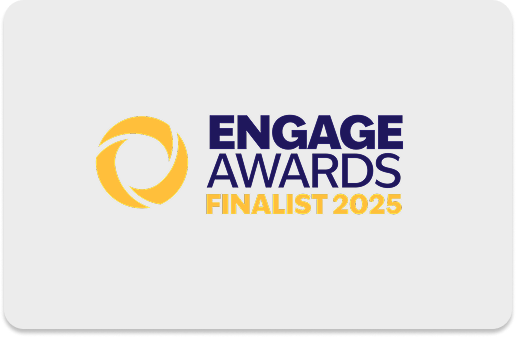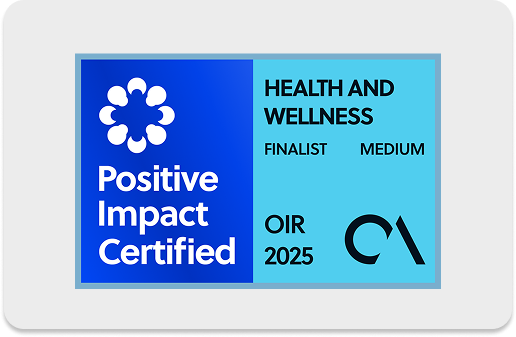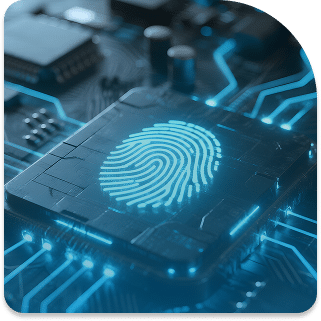Quality assurance (QA) plays a critical role in ensuring customer satisfaction and maintaining operational efficiency in call centers. By implementing robust QA processes, businesses can monitor performance, identify improvement areas, and provide consistent, high-quality service.
Effective QA not only enhances customer loyalty but also streamlines operations, saving time and resources. In this article, we will explore how call centers can improve QA through 20 actionable strategies.
These tips are designed to help call centers achieve excellence in their service delivery and meet ever-evolving customer expectations.
1. Develop A Clear QA Strategy

A well-defined quality assurance (QA) strategy is the cornerstone of delivering exceptional customer service and maintaining operational efficiency in a call center. This strategy must align with your organization’s business objectives and customer service standards to ensure all efforts contribute to overarching goals.
It is essential to clearly outline the purpose of QA within your call center, detailing how it will improve customer satisfaction, optimize processes, and support the team’s overall performance.
A strategic approach allows call centers to set clear priorities and allocate resources effectively. By defining specific goals, such as improving first-call resolution rates or enhancing customer satisfaction scores, management can direct time and tools toward these objectives.
For example, investing in advanced analytics software or allocating additional training hours becomes more purposeful when driven by a robust QA plan. This clarity reduces inefficiencies and fosters a culture of continuous improvement.
To map out a successful QA strategy, begin by setting specific, measurable, achievable, relevant, and time-bound (SMART) goals. For instance, aim to increase customer satisfaction scores by 10% within six months or reduce average handling times by 20% in the next quarter.
Assign clear responsibilities by designating a QA manager or team to oversee implementation and progress. Establish timelines for periodic reviews to assess the effectiveness of your strategy, ensuring flexibility to adapt to unforeseen challenges or evolving customer needs.
A comprehensive strategy serves as a roadmap, aligning every team member’s efforts with the broader vision for success.
2. Assign QA Ownership
Assigning clear ownership of QA activities is crucial for maintaining focus, ensuring accountability, and driving consistent improvements. Without designated personnel or teams, QA processes risk becoming disorganized, inconsistent, and ineffective.
By assigning ownership to a dedicated individual or team, call centers can centralize oversight, streamline processes, and hold the right people accountable for meeting quality standards.
QA ownership enables better focus on critical tasks, such as monitoring agent performance, analyzing customer interactions, and providing actionable feedback. With a dedicated team or individual at the helm, decision-making becomes more efficient.
For example, QA managers can quickly implement corrective measures, allocate resources for agent training, or revise evaluation criteria based on emerging trends. This level of responsiveness ensures that QA processes remain agile and effective.
Selecting the right individuals or teams for QA ownership is a critical step. Choose personnel with strong analytical skills, deep knowledge of customer service principles, and experience in performance management.
These individuals should be detail-oriented and possess excellent communication skills to effectively provide feedback to agents and collaborate with leadership. Consider offering specialized training or certifications in quality management to further equip the team with the tools they need to excel.
Assigning ownership to competent and well-trained professionals ensures that QA processes are executed effectively, driving measurable improvements in service quality and operational efficiency.
3. Monitor All Customer Support Channels
In today’s digital-first world, customers expect seamless support across various communication channels, including phone, email, live chat, and social media. To meet these expectations, it is essential to apply quality assurance (QA) practices consistently across all customer touchpoints.
By monitoring every channel, call centers can ensure a uniform level of service quality regardless of how customers choose to reach out.
A unified QA approach offers several advantages. It helps maintain consistent service standards across platforms, which is critical for building customer trust and loyalty.
For instance, a customer who receives excellent assistance via chat should expect the same quality of support over the phone or on social media. This consistency strengthens brand reputation and reduces the risk of service disparities that could lead to dissatisfaction or churn.
Moreover, monitoring all channels allows call centers to identify performance trends and adjust strategies to address weaknesses or capitalize on strengths.
Effective multi-channel monitoring requires the right tools and techniques. Customer relationship management (CRM) systems can consolidate interactions from all channels, making it easier to evaluate performance holistically.
Tools like speech analytics and chat monitoring software provide real-time insights into conversations, while social media listening platforms help assess sentiment and engagement quality. Additionally, quality scorecards tailored for each channel can guide evaluations while maintaining consistent benchmarks.
4. Define Key Behaviors And Metrics
Defining key behaviors and performance metrics is the foundation of an effective QA program. These elements set the standards for evaluating agent performance, directly impacting the quality of customer interactions.
Clear definitions ensure that agents understand what is expected of them and allow QA teams to measure success in a structured, objective manner.
The selected behaviors and metrics should reflect the call center’s priorities, focusing on customer satisfaction and operational efficiency. For example, behaviors such as active listening, polite communication, and accurate problem-solving contribute to positive customer experiences.
Metrics like first call resolution (FCR), average handling time (AHT), and customer satisfaction scores (CSAT) offer quantifiable insights into how well these behaviors are executed. Aligning these standards with customer needs ensures that QA evaluations drive meaningful improvements.
Examples of key behaviors that should be monitored include having empathy during interactions, adherence to established protocols, and effective upselling when appropriate.
On the metrics side, tracking net promoter scores (NPS) can indicate overall customer loyalty, while monitoring hold times can reveal opportunities to streamline processes.
Combining behavioral evaluations with performance data allows call centers to pinpoint areas for improvement and implement targeted solutions.
By clearly defining these behaviors and metrics, call centers can elevate both individual and team performance, ultimately delivering better outcomes for customers and the organization.
5. Utilize Comprehensive Monitoring Tools
Advanced monitoring tools are indispensable for ensuring high-quality interactions in call centers. These tools enable detailed analysis of agent performance, providing actionable insights to improve service delivery.
Popular tools include speech analytics software, which identifies trends in customer sentiment, and CRM systems that track and analyze interactions across multiple channels.
Other tools, like screen recording software and real-time monitoring platforms, allow supervisors to evaluate not only what agents say but also how they navigate internal systems during interactions.
These tools offer real-time insights that enhance both performance and customer satisfaction. For instance, real-time call monitoring can alert supervisors to potential issues during a conversation, enabling immediate intervention to resolve customer concerns.
Speech analytics tools can detect emotional cues in a customer’s tone, allowing the QA team to identify calls that need further review. Additionally, automated reporting features help managers track trends, compare performance across teams, and align outcomes with business objectives.
Integrating these tools into daily operations requires a strategic approach. Start by training staff to use the tools effectively, ensuring both agents and supervisors are familiar with their functionalities.
Establish clear protocols for data usage, focusing on actionable insights rather than overwhelming staff with excessive information.
Regularly review and update the tools to align with evolving business needs and technology advancements. By embedding these tools into daily workflows, call centers can maintain consistent quality while staying agile in a dynamic environment.
6. Develop Effective Scorecards
Scorecards play a pivotal role in measuring agent performance against established quality assurance (QA) metrics. They provide a structured framework for evaluating how well agents meet service standards, ensuring consistent and objective assessments.
Scorecards break down key performance indicators (KPIs) into measurable components, such as adherence to protocols, communication skills, and resolution efficiency. By offering a clear snapshot of an agent’s performance, scorecards help QA teams identify strengths, areas for improvement, and overall trends.
To develop scorecards that are fair, comprehensive, and motivating, start by aligning them with your QA strategy and business goals. Include a mix of qualitative and quantitative metrics to capture a holistic view of performance.
For instance, incorporate customer satisfaction scores (CSAT) alongside adherence to scripts and compliance metrics. Ensure that the criteria are realistic and clearly communicated to agents so they understand how their performance will be assessed.
A well-designed scorecard motivates agents by highlighting achievable goals and recognizing their accomplishments.
Involving stakeholders in the development process enhances the effectiveness and acceptance of scorecards. Collaborate with QA teams, supervisors, and agents to identify relevant metrics and ensure the scorecard reflects operational realities.
Conduct pilot tests to refine the scorecard before full implementation, using feedback to address any gaps or ambiguities. By fostering a collaborative approach, call centers can create scorecards that not only drive performance improvements but also boost agent morale and engagement.
7. Provide Regular Feedback And Coaching
Continuous feedback and coaching are vital to improving agent performance and ensuring adherence to quality assurance (QA) standards.
Regular feedback sessions create opportunities to address gaps, reinforce strengths, and keep agents aligned with the call center’s goals. These interactions foster a culture of growth and accountability, where agents feel supported and motivated to improve.
By maintaining an ongoing dialogue, supervisors can guide agents in real time, making adjustments that prevent minor issues from becoming bigger challenges.
Delivering constructive feedback effectively requires a balance of clarity, encouragement, and actionability. Start by focusing on specific behaviors or outcomes, avoiding vague criticism that can confuse or demotivate.
Use examples from monitored calls to illustrate points, ensuring feedback is tied to measurable performance data.
Always pair feedback with actionable recommendations for improvement, so agents understand how to address the issues. Additionally, recognize successes during these sessions to boost morale and maintain a positive atmosphere.
Tailoring coaching sessions to individual needs enhances their effectiveness. Use performance data from QA evaluations to identify each agent’s unique strengths and weaknesses.
For example, an agent struggling with call resolution may benefit from role-playing exercises, while another agent with excellent resolution skills might focus on improving upselling techniques.
Personalized coaching ensures that every session is relevant and impactful, helping agents develop the specific skills they need to excel.
8. Focus On Underperforming Agents
Underperforming agents can have a significant impact on overall service quality and customer satisfaction. Identifying and addressing their challenges is critical to maintaining a high standard of service.
By proactively supporting these agents, call centers can uplift team performance and reduce turnover, ensuring a more consistent customer experience. Failure to address underperformance risks demoralizing the rest of the team and perpetuating poor practices.
Targeted training and development plans are the most effective way to help underperforming agents improve. Start by analyzing performance data to pinpoint the root causes of their struggles, such as lack of product knowledge, poor communication skills, or difficulty following protocols.
Develop a tailored plan that includes specific goals, milestones, and timelines for improvement. Incorporate interactive training methods, such as role-playing or shadowing top-performing agents, to provide hands-on learning opportunities.
Consistent follow-ups ensure that progress is tracked and adjustments to the plan can be made as needed.
Regular reassessment is essential to ensure that improvements are sustained and new challenges are addressed. Use QA evaluations to measure the agent’s progress over time, focusing on both quantitative metrics and qualitative feedback.
Celebrate achievements, no matter how small, to keep agents motivated and reinforce positive changes. By maintaining a cycle of assessment, support, and recalibration, call centers can help underperforming agents reach their potential and contribute meaningfully to the team’s success.
9. Encourage Self-Monitoring
Encouraging self-monitoring among agents is a powerful way to foster personal accountability and professional growth. When agents are empowered to evaluate their own performance, they gain a deeper understanding of their strengths and areas for improvement.
This autonomy instills a sense of ownership over their role, reducing dependency on supervisors for feedback. Self-monitoring also promotes a culture of continuous learning, as agents take proactive steps to align their performance with established quality assurance (QA) standards.
Several tools and methods can enable agents to self-assess and track their progress effectively.
For instance, performance dashboards integrated into customer relationship management (CRM) systems provide agents with real-time insights into their key metrics, such as average handling time, customer satisfaction scores, and adherence rates.
Recorded call reviews allow agents to revisit their interactions, identifying what went well and what could be improved. Incorporating self-evaluation forms or templates that align with QA criteria ensures agents are using consistent benchmarks for assessment.
Self-monitoring leads to self-initiated improvements by empowering agents to identify and address gaps independently. For example, an agent who notices frequent interruptions during calls might practice active listening techniques to improve communication.
Additionally, the ability to track progress over time boosts confidence, as agents see measurable evidence of their growth. By integrating self-monitoring into daily routines, call centers create an environment where agents take ownership of their development and consistently strive to exceed expectations.
10. Motivate Agents Through Recognition
Recognition programs are essential for boosting morale and motivating agents to meet and exceed QA standards. Acknowledging employees’ hard work and achievements not only fosters a positive work environment but also reinforces desired behaviors and performance.
Recognized agents feel valued, leading to increased engagement and a stronger commitment to delivering exceptional customer service. Recognition serves as a reminder that their contributions are critical to the call center’s success.
Recognition can take various forms, ranging from informal acknowledgments to structured reward systems. Verbal praise during team meetings or one-on-one sessions can have an immediate and motivating impact.
Formal recognition programs, such as “Employee of the Month” awards or performance-based bonuses, provide tangible incentives for agents to maintain high standards.
Digital platforms that feature leaderboards or badges for top performers add an element of gamification, making recognition both interactive and rewarding.
Examples from successful call centers highlight the effectiveness of well-structured recognition programs. One center implemented a peer-to-peer recognition system, where agents could nominate colleagues for exemplary performance.
This initiative not only boosted morale but also encouraged teamwork. Another center introduced a tiered reward program tied to QA scores, where agents could earn points redeemable for prizes, creating a direct link between quality performance and tangible rewards.
11. Implement AI-Powered Quality Management
The integration of artificial intelligence (AI) into quality assurance (QA) processes has revolutionized how call centers monitor and improve customer interactions. AI-driven tools can analyze vast amounts of data in real time, identifying patterns and trends that may be difficult for human evaluators to detect.
One of the key benefits of AI in QA is its ability to automate routine tasks. For instance, AI-powered speech analytics can automatically evaluate calls for tone, sentiment, and keyword usage, saving QA teams countless hours of manual review.
AI can also flag interactions that deviate from predefined standards, allowing supervisors to focus on resolving specific issues rather than sifting through routine calls.
This efficiency enables QA staff to dedicate more time to strategic analysis, such as identifying training needs or developing initiatives to improve agent performance.
Case studies demonstrate the transformative impact of AI on QA outcomes. For example, a global telecommunications company implemented an AI-driven platform that monitored all customer interactions in real time, leading to a 25% increase in first-call resolution rates within six months.
Another organization in the financial sector used AI to automate compliance monitoring, reducing human errors and ensuring consistent adherence to regulatory standards. These successes highlight the potential of AI to optimize QA processes, enhance customer experiences, and drive measurable business results.
12. Set Clear QA Objectives
Setting clear quality assurance (QA) objectives is fundamental to ensuring that call center performance aligns with organizational goals. For example, an objective like “Increase first call resolution rates by 10% within three months” provides clarity, direction, and a concrete timeline for evaluation.
Effective communication of these objectives across the organization is equally important. When QA goals are shared with agents, supervisors, and leadership teams, everyone understands their role in achieving them.
Use team meetings, dashboards, and training sessions to ensure that all stakeholders are aware of the objectives and the steps needed to meet them. Regularly reinforcing these goals helps maintain focus and alignment, driving collective efforts toward measurable improvement.
Tracking and adjusting QA objectives based on performance data is essential for staying on course. Leverage analytics tools to monitor progress in real time and identify areas that require recalibration.
For instance, if data shows that a target is consistently unmet, assess whether the objective was unrealistic or if additional resources are needed to achieve it. Conversely, if objectives are easily surpassed, consider raising the bar to encourage further growth.
This dynamic approach ensures that QA objectives remain relevant, achievable, and aligned with both customer needs and business priorities.
13. Standardize Evaluation Criteria
Standardizing evaluation criteria is essential for ensuring fairness and consistency in quality assurance (QA) assessments. When evaluation benchmarks vary between evaluators or are unclear, agents may perceive the process as subjective, leading to confusion and demotivation.
A uniform set of criteria eliminates ambiguity, ensures that all agents are held to the same standards, and provides a clear framework for improving performance.
To develop effective evaluation criteria, consider industry standards, customer expectations, and the unique objectives of your call center. Begin by identifying the key behaviors and metrics that contribute to service excellence, such as professionalism, adherence to protocols, and first-call resolution.
Align these criteria with customer satisfaction priorities, ensuring that they reflect the qualities customers value most. Additionally, factor in business goals like reducing handling times or increasing upselling success rates to create a well-rounded evaluation framework.
Training QA evaluators to apply standardized criteria is critical for achieving consistent assessments. Provide comprehensive training that includes reviewing the criteria in detail, conducting mock evaluations, and discussing real-life scenarios.
Use calibration sessions where evaluators review the same calls together to align their interpretations and scoring methods. Encourage open communication among evaluators to address discrepancies and continuously refine the evaluation process.
14. Utilize Customer Feedback
Customer feedback is a cornerstone of effective QA practices and plays a vital role in improving service delivery. Customers provide a unique perspective on their interactions with agents, highlighting areas where service meets or falls short of their expectations.
Integrating their insights into QA processes not only enhances the accuracy of evaluations but also strengthens the connection between QA initiatives and customer satisfaction.
To capture and analyze customer feedback effectively, use a variety of methods such as post-call surveys, email questionnaires, and social media listening tools. Encourage customers to rate their experiences and provide open-ended comments to gain qualitative insights.
Implement sentiment analysis tools to evaluate trends in feedback and identify recurring pain points or positive experiences. Ensure that this feedback is collected systematically and securely to maintain data integrity and compliance with privacy regulations.
Integrating customer feedback into QA evaluation processes and training materials is key to driving meaningful improvements. Use customer insights to refine evaluation criteria, ensuring they reflect the factors that matter most to your audience.
Incorporate real feedback examples into training sessions to help agents understand how their actions impact customer satisfaction. Additionally, create actionable plans based on feedback trends, such as targeted coaching sessions for agents or process adjustments to address recurring issues.
15. Conduct Regular QA Audits
Regular quality assurance (QA) audits are essential for maintaining the effectiveness of QA systems and ensuring compliance with established standards. These audits provide a structured review of existing processes, identifying strengths and weaknesses in both agent performance and the overall QA framework.
Planning and conducting QA audits requires a systematic approach. Start by defining the scope and objectives of the audit, such as evaluating adherence to scripts, analyzing customer satisfaction scores, or assessing compliance with industry regulations.
Determine who will be involved in the audit process, including QA managers, supervisors, and external reviewers if necessary, to ensure a comprehensive evaluation.
Use a combination of data analysis, call reviews, and agent interviews to gather insights. Establish a timeline for the audit, including milestones for data collection, evaluation, and reporting.
Following up on audit findings is critical to driving improvements. After identifying gaps, prioritize them based on their impact on service quality and operational efficiency. Develop actionable plans to address these issues, such as revising evaluation criteria, implementing targeted training, or updating QA tools.
Communicate the results and proposed solutions to all stakeholders, including agents, supervisors, and management, to ensure alignment and accountability. Regularly monitor progress to ensure that corrective actions yield the desired outcomes and maintain a cycle of continuous improvement.
16. Invest in Continuous Training
Continuous training is vital for keeping agents updated with the latest customer service techniques and quality assurance (QA) standards.
As customer expectations and industry trends evolve, agents need ongoing development to maintain high levels of performance. Investing in training ensures that agents not only meet but exceed QA benchmarks, enhancing both customer satisfaction and operational efficiency.
Effective training programs should follow a structured format and frequency to maximize results. Consider a combination of onboarding training for new agents, refresher courses for existing staff, and specialized sessions for addressing specific challenges.
Weekly or bi-weekly micro-learning sessions are ideal for keeping agents engaged without overwhelming them, while quarterly workshops provide deeper insights into complex topics. Regular evaluations of training effectiveness ensure that programs remain relevant and impactful.
Innovative training methods can further enhance learning outcomes. Gamification, which incorporates elements like points, badges, and leaderboards, motivates agents by making training interactive and rewarding.
Interactive modules, such as role-playing exercises and virtual simulations, provide hands-on experience in handling various customer scenarios.
Additionally, leveraging digital tools like e-learning platforms and video tutorials allows agents to access training materials at their convenience, fostering flexibility and self-paced learning.
17. Foster A Quality-Centric Culture
Creating a workplace culture that values and rewards high-quality service is fundamental to sustaining long-term success in a call center. A quality-centric culture aligns every aspect of operations with the goal of delivering exceptional customer experiences.
When quality is embedded into an organization’s values and practices, employees are more likely to take ownership of their performance and strive for continuous improvement. This cultural shift not only enhances service delivery but also fosters employee engagement and loyalty.
Fostering a quality-centric culture requires intentional strategies. Leadership plays a critical role in setting the tone—managers should lead by example, demonstrating their commitment to quality through clear communication and actionable goals.
Regularly celebrating achievements, whether through team recognition or individual rewards, reinforces the importance of quality in daily operations.
Transparent communication policies ensure that employees understand how their efforts contribute to broader organizational goals. Team-building activities that emphasize collaboration and shared success further strengthen the culture, creating a sense of unity and purpose.
The long-term benefits of a quality-centric culture extend beyond operational improvements. Employees in such environments tend to experience higher job satisfaction, as they feel valued and supported in their roles.
This, in turn, reduces turnover rates and associated recruitment costs. Additionally, customers benefit from consistently high service levels, leading to increased loyalty and positive word-of-mouth recommendations.
18. Leverage Speech Analytics
Speech analytics is a powerful tool that provides deeper insights into customer interactions and agent performance, transforming how call centers approach quality assurance (QA).
These tools go beyond surface-level evaluations, enabling call centers to understand the nuances of customer-agent conversations and optimize their processes accordingly.
Implementing speech analytics begins with selecting the right platform that aligns with your call center’s needs and goals. Once integrated, the system can automatically evaluate calls for key metrics, such as compliance with scripts, tone of voice, and keyword usage.
Speech analytics can also flag specific calls for further review, such as those involving dissatisfied customers or potential compliance risks. The data collected is then used to generate detailed reports that highlight trends and areas for improvement.
To maximize the benefits, organizations should provide training on how to interpret and act on these insights, ensuring that QA teams and supervisors can use the data effectively.
Case examples demonstrate the transformative potential of speech analytics. A retail call center used the technology to identify frequently recurring phrases during complaints, leading to process changes that reduced customer dissatisfaction by 30%.
Similarly, a healthcare provider leveraged speech analytics to detect and address gaps in compliance, achieving a 20% improvement in adherence rates within a quarter.
These successes illustrate how speech analytics can drive tangible improvements in both customer satisfaction and operational efficiency, making it an indispensable tool for modern QA practices.
19. Implement Real-Time Monitoring
Real-time monitoring is a game-changer in quality assurance (QA), allowing supervisors to provide immediate feedback and make corrections during customer interactions.
Unlike traditional QA evaluations conducted after the fact, real-time monitoring enables call centers to address issues as they happen, ensuring that customer concerns are resolved effectively and efficiently. This proactive approach minimizes the risk of escalations and fosters a higher standard of service quality.
Several tools and technologies make real-time monitoring seamless and effective. Call monitoring software allows supervisors to listen to live calls and observe interactions without disrupting the conversation.
Whisper coaching features enable supervisors to provide guidance to agents during the call, helping them navigate complex situations or improve their approach instantly.
Integrated customer relationship management (CRM) systems and analytics platforms can provide live dashboards, offering insights into ongoing performance metrics such as average handle time (AHT) or customer satisfaction (CSAT) scores. These tools can be easily integrated into existing QA workflows to create a unified monitoring process.
Effectively using real-time data requires clear guidelines and structured implementation. Supervisors should prioritize coaching opportunities during live calls while avoiding micromanagement that might overwhelm agents. Focus on identifying teachable moments that enhance agent confidence and skill.
Additionally, compile insights from real-time monitoring to inform post-call training sessions and adjust QA criteria as needed.
20. Align QA With Business Objective
Aligning quality assurance (QA) objectives with the broader goals of the business is essential for ensuring that QA efforts drive meaningful impact. When QA is directly tied to organizational priorities, such as improving customer retention or boosting revenue, it becomes a strategic tool rather than a routine process.
This alignment ensures that every evaluation, training session, and performance improvement initiative contributes to the overall success of the organization.
To achieve this alignment, continuous communication and joint planning sessions are key. QA managers should work closely with leadership teams to understand the company’s strategic goals and translate them into actionable QA objectives.
For example, if the business aims to increase upselling success rates, QA criteria should include metrics for evaluating how well agents identify and act on upselling opportunities.
Regular meetings between QA teams, supervisors, and other stakeholders help keep everyone on the same page, ensuring that QA practices evolve alongside business priorities.
The benefits of aligning QA with business objectives are significant. It creates a clear link between agent performance and organizational success, motivating employees to see their role as integral to the company’s achievements.
Additionally, this alignment fosters greater efficiency by focusing QA efforts on the areas that deliver the most value, such as resolving customer pain points or driving loyalty.
Ultimately, when QA objectives support business goals, the organization is better positioned to achieve sustainable growth and deliver exceptional customer experiences.
Conclusion About Call Center Quality Assurance Best Practices
Quality assurance is the backbone of a successful call center, ensuring that customer satisfaction and operational efficiency remain at the forefront.
From setting clear objectives and leveraging advanced technologies to fostering a quality-focused culture, the strategies discussed here provide actionable steps to elevate your call center operations.
Now is the time to evaluate your current QA processes. Are your monitoring tools up-to-date? Are you using customer feedback to its fullest potential? By continuously innovating and refining QA practices, you can stay ahead in a competitive market and exceed customer expectations.
Ready to take your quality assurance to the next level? Partner with Gear Inc, a leader in delivering tailor-fit BPO solutions since 2007.
With a global workforce of over 6,000 professionals and expertise in services like live chat support, technical assistance, and data entry, Gear Inc is committed to driving growth and empowering businesses worldwide.
Don’t settle for less. Contact Gear Inc today to experience the difference and gear up for exceptional customer service that sets your brand apart.
Frequently Asked Questions About Call Center Quality Assurance Best Practices
How Do You Train Agents To Meet QA Standards In A Call Center?
Training agents to meet QA standards requires a combination of structured learning, regular feedback, and hands-on practice.
Start by clearly defining the quality benchmarks and expectations, and ensure agents understand how these standards impact customer satisfaction and overall performance. Use role-playing scenarios, call simulations, and real-life examples to help agents internalize the skills they need.
Are Quality Assurance Standards The Same Across All Call Centers?
No, quality assurance standards vary depending on the industry, customer expectations, and specific business goals. A customer service call center may focus more on metrics like first-call resolution and customer satisfaction, while a sales-oriented center might prioritize conversion rates and compliance.
When Should Call Center QA Evaluations Be Conducted?
QA evaluations should be conducted regularly, but the frequency depends on call volume, agent performance, and the specific goals of the QA program. Weekly or bi-weekly reviews are ideal for high-volume centers, while smaller teams may benefit from monthly evaluations.
Is There A Difference Between Internal And External Quality Assurance Evaluations?
Yes, internal and external quality assurance evaluations differ in perspective and purpose. Internal QA focuses on ensuring agents meet company-defined standards, such as adherence to scripts, compliance, and operational goals.
External QA, on the other hand, evaluates performance from a customer’s perspective, often using third-party services or customer feedback to gauge satisfaction and identify service gaps.






















